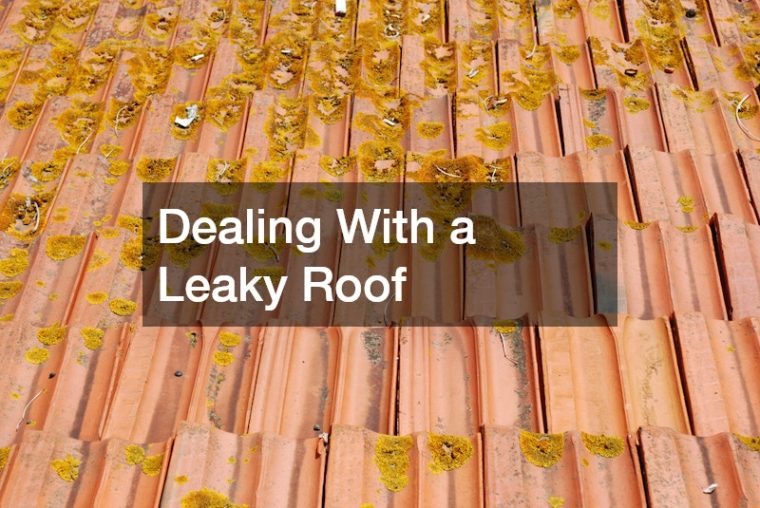
A leaky roof is one of the most frustrating and potentially damaging issues a homeowner can face. What starts as a small drip can quickly escalate into major water damage, structural issues, and costly repairs if not addressed promptly. Understanding the causes, warning signs, and repair solutions for a leaky roof can save you from unnecessary stress—and protect your home from long-term damage.
What Causes a Leaky Roof?
Roofs are designed to withstand years of weather, but over time, even the most durable materials can deteriorate. Several common issues can lead to leaks, including:
-
Damaged shingles or tiles: Shingles that crack, curl, or go missing leave your roof vulnerable to water intrusion.
-
Worn flashing: Flashing seals roof joints and edges, especially around chimneys, vents, and skylights. When it rusts or loosens, leaks can occur.
-
Clogged gutters: When gutters are blocked, rainwater can pool and seep under the roof instead of draining properly.
-
Aging roof materials: Over time, exposure to UV rays, wind, and heavy rain weakens roofing materials, making them more susceptible to leaks.
-
Poor installation: A roof that wasn’t installed correctly can develop leaks much earlier than expected.
No matter the cause, a leaky roof should never be ignored. Even a small amount of moisture can lead to mold growth, insulation damage, and rotted wood structures inside your attic.
Warning Signs You May Have a Leak
Sometimes, roof leaks are easy to spot—such as water dripping from the ceiling during a storm. However, not all leaks are that obvious. Subtle warning signs may include:
-
Stains or discoloration on ceilings or walls
-
Peeling paint or bubbling wallpaper
-
Musty odors in the attic or upper rooms
-
Damp insulation or dark patches under the roof decking
-
Visible mold growth around vents or beams
By catching these signs early, you can prevent a small leak from turning into a major problem. Schedule an inspection as soon as you notice anything unusual.
Why You Should Never Ignore a Leaky Roof
Delaying repairs on a leaky roof can cause more harm than you might realize. Water doesn’t just stay where it enters—it travels along beams, insulation, and drywall, spreading damage throughout your home. Over time, this can lead to:
-
Structural weakening: Persistent moisture can rot wooden framing, causing sagging or even collapse in extreme cases.
-
Electrical hazards: Water infiltration near electrical wiring can create dangerous short circuits.
-
Mold and mildew: Damp environments promote mold growth, which can trigger allergies and respiratory issues.
-
Higher repair costs: The longer you wait, the more expensive and extensive the repairs will become.
Addressing leaks quickly is the most effective way to protect your investment and ensure the safety and comfort of your family.
Temporary Fixes vs. Professional Repairs
When water starts coming in, your first instinct may be to handle it yourself. While a temporary fix can help minimize damage until professional help arrives, it’s important to remember that DIY solutions are not permanent.
Temporary fixes may include:
-
Using a tarp to cover the affected area
-
Applying roofing cement to seal visible cracks
-
Clearing debris or leaves that block water flow
However, only a qualified roofing contractor can identify the full extent of the problem and provide lasting solutions. Professional roofers will inspect your attic, roof surface, and flashing to pinpoint the exact source of the leak. Depending on the condition of your roof, they may recommend repairs, partial replacement, or a full roof overhaul if damage is extensive.
Preventing Future Leaks
The best way to avoid dealing with a leaky roof again is through preventative care. Regular maintenance goes a long way in extending your roof’s lifespan and preventing costly repairs. Consider the following maintenance tips:
-
Schedule annual roof inspections: Have a professional roofer examine your roof at least once a year—preferably before storm season.
-
Clean your gutters regularly: Keep gutters clear of debris to ensure water can flow freely away from your home.
-
Trim nearby trees: Overhanging branches can scrape or puncture shingles during strong winds.
-
Check attic ventilation: Poor ventilation can trap moisture and contribute to roof deterioration.
-
Repair small problems early: Don’t wait until a leak develops—fix loose shingles, damaged flashing, or minor cracks right away.
By taking these preventative measures, you can protect your home from leaks and prolong the life of your roof for years to come.
When It’s Time for a Replacement
Sometimes, repairing a roof isn’t enough—especially if your roof is more than 20 years old. Constant patching can become more expensive than installing a new roof altogether. A professional roofer can assess whether replacement is a better long-term investment. Modern roofing materials, such as metal or architectural shingles, offer superior durability, energy efficiency, and weather resistance compared to older systems.
Replacing your roof can also increase your home’s value and curb appeal, giving you peace of mind for decades to come.
Get Your Leaky Roof Fixed Today!
If you’ve noticed signs of a leaky roof, don’t wait until the damage worsens. A small leak can quickly turn into a major problem that affects your home’s structure, comfort, and safety. Contact a trusted local roofing professional to inspect your roof, identify the source of the leak, and provide the right repair or replacement solution.
By taking quick action, you’ll not only prevent further damage but also restore your home’s protection against the elements. Get your leaky roof fixed today—and keep your home safe, dry, and worry-free for years to come.

